Sightseeing Spots
Search Results314
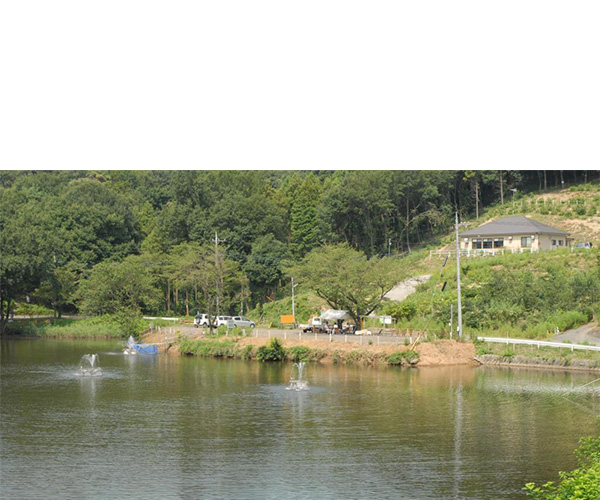
This fishing pond is very accessible, located approximately 9 kilometers (about 15 minutes) from the Higashi Matsuyama Interchange of the Kan-Etsu Expressway and roughly 5 kilometers (about 10 minutes) from the Ranzan-Ogawa Interchange. The pond is encircled by beautiful nature and has a surface area of roughly 11,600 square meters. On Saturday and Sunday, you can enjoy handmade udon made with local flour and buy locally grown vegetables at the farmer’s restaurant.
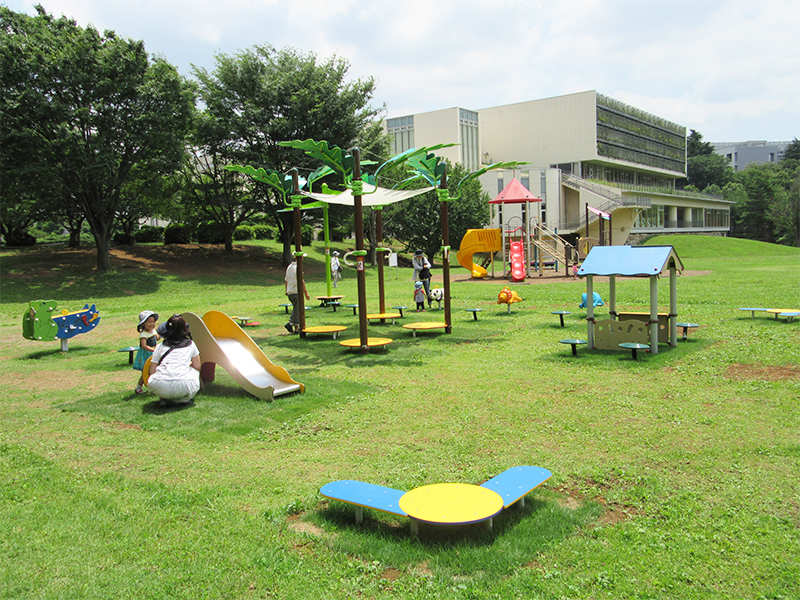
This 20-hectare park was established in March 1989 on the former site of Camp Drake, which was confiscated by the U.S. military in 1945, to ensure a comfortable living environment with beautiful urban landscape. The park is well known as a place for sports and recreation, with an outdoor plaza and jogging course. This vast park is also used as an evacuation site. Nearby are Tokyo Metropolitan Oizumi Central Park, Oizumi Sakura Sports Park, Tokyo Yono Green Belt (Nagakubo Ryokuchi), Niiza Green Path and Sakae Green Path in Niiza City, together serving as a large green belt that straddles municipal and prefectural borders.
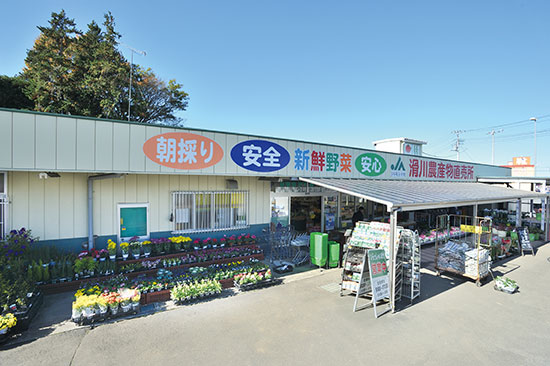
At Namegawa Farmers Market, you can find locally harvested fruits and vegetables for sale. We recommend the freshly polished-to-order white rice, cucumbers, eggplant, daikon radishes and other seasonal items alongside an endless supply of fresh vegetables, popular with many customers. We also hold special events such as corn festival, new rice festival, and agricultural festival, and sell specialties such as Polotan (chestnut variety) and Bushu Koro persimmon.

A complex where visitors can experience Scandinavian culture. Rent a private tent sauna at the Sauna Club, enjoy a Scandinavian-style Kokko BBQ, or shop for regional specialties. In the spring of 2021, a glamping field for up to 10 tents was added to the facility. Feel free to stay the night or simply enjoy a day of fun at this popular location!
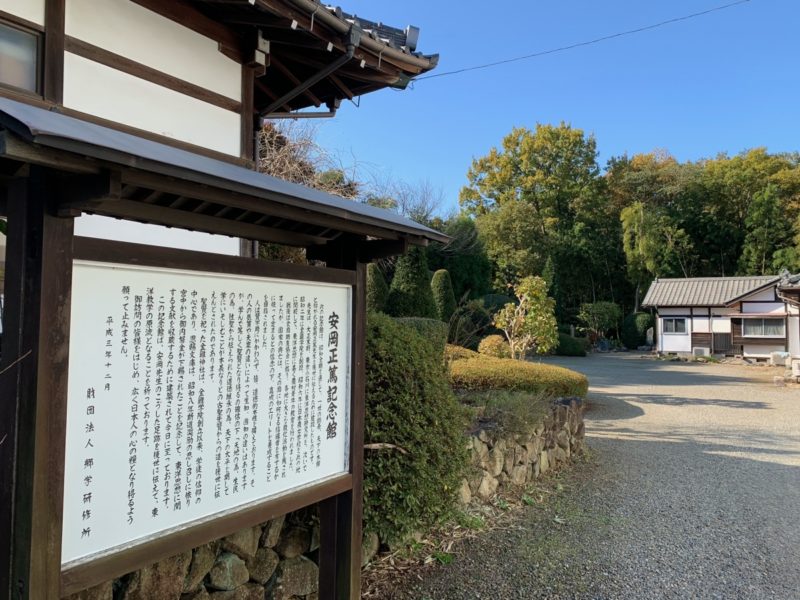
In 1970, the “Gogaku Kenshujo Foundation” (village school training institution) was established on the site of the “Japan Agricultural Teachers' School,” founded by Dr. Masahiro Yasuoka in the early Showa period. In 2012, the foundation was officially named the “Foundation for Gogaku Training Institute and Masahiro Yasuoka Memorial Museum” to carry on the tradition of the Japan Agricultural Training School and to promote Gogaku (village schools), as well as to pass on to future generations the much needed teachings and anthropology of Dr. Masahiro Yasuoka.
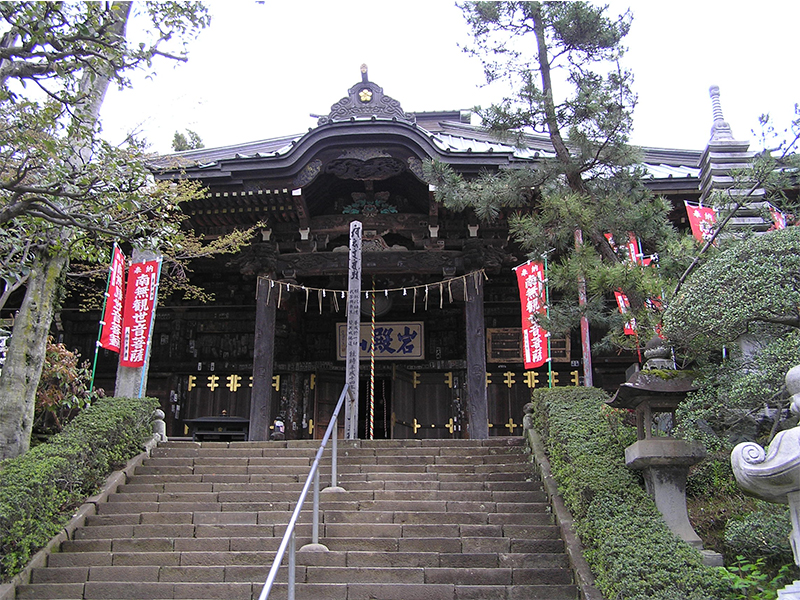
Anrakuji Temple is the 11th temple of the Bandō 33 Kannon Pilgrimage (Bandō Sanjūsankasho) and has been known as Yoshimi Kannon since ancient times. The main deity is the Holy Avalokitesvara, the deity of compassion, and according to the Yoshimi Kannon dependent origination (Buddhist doctrine), the origin of the temple dates back to about 1200 years ago, when the Buddhist priest Gyoki carved a statue of Avalokitesvara and placed in the rock cave. Every year on June 18th, the Kannon is unveiled in the early morning to the public to ward off evil spirits. Special "Yakuwake Dango" (dumplings to ward off evil) have been sold on this day since long ago, and the long road to Anrakuji Temple continues to be lined with stalls every June 18th, with the area very crowded from around 2 am to early morning.
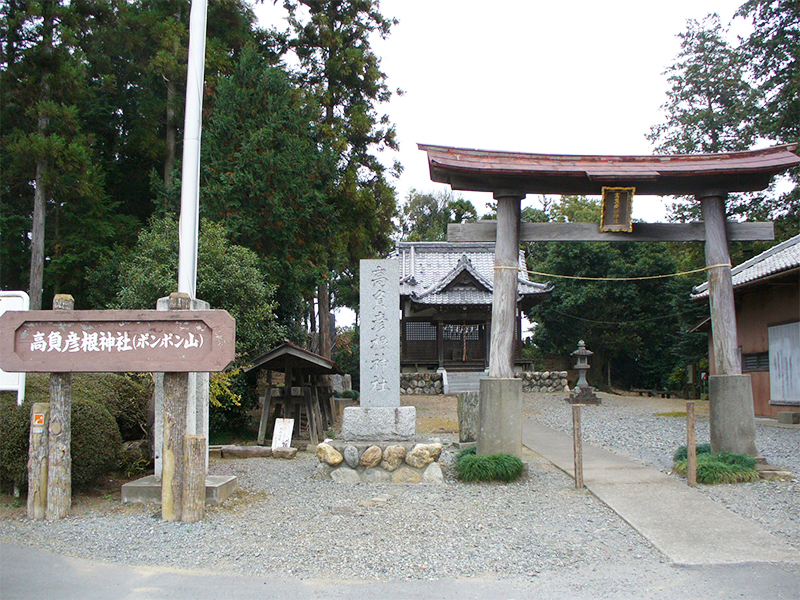
Behind the precincts of Takaohikone Shrine in Tako, Yoshimi Town, there is a rocky mountain with a great view. If you climb up the mountainside and stomp your feet, you will hear a clomping sound (ponpon). There is a legend regarding this place that goes something like this: Once upon a time, there was a rich man looking for a place to hide his fortune. One day, he paid a visit to Takaohikone Shrine and asked for the best place to hide it. The god told him, "Bury it in this rocky mountain. I will protect it for you." The man felt relieved and buried all his riches in the mountain. Today, the rocky mountain is called Mt. Ponpon and is said to be inhabited by a divine spirit, as a remnant of this story.
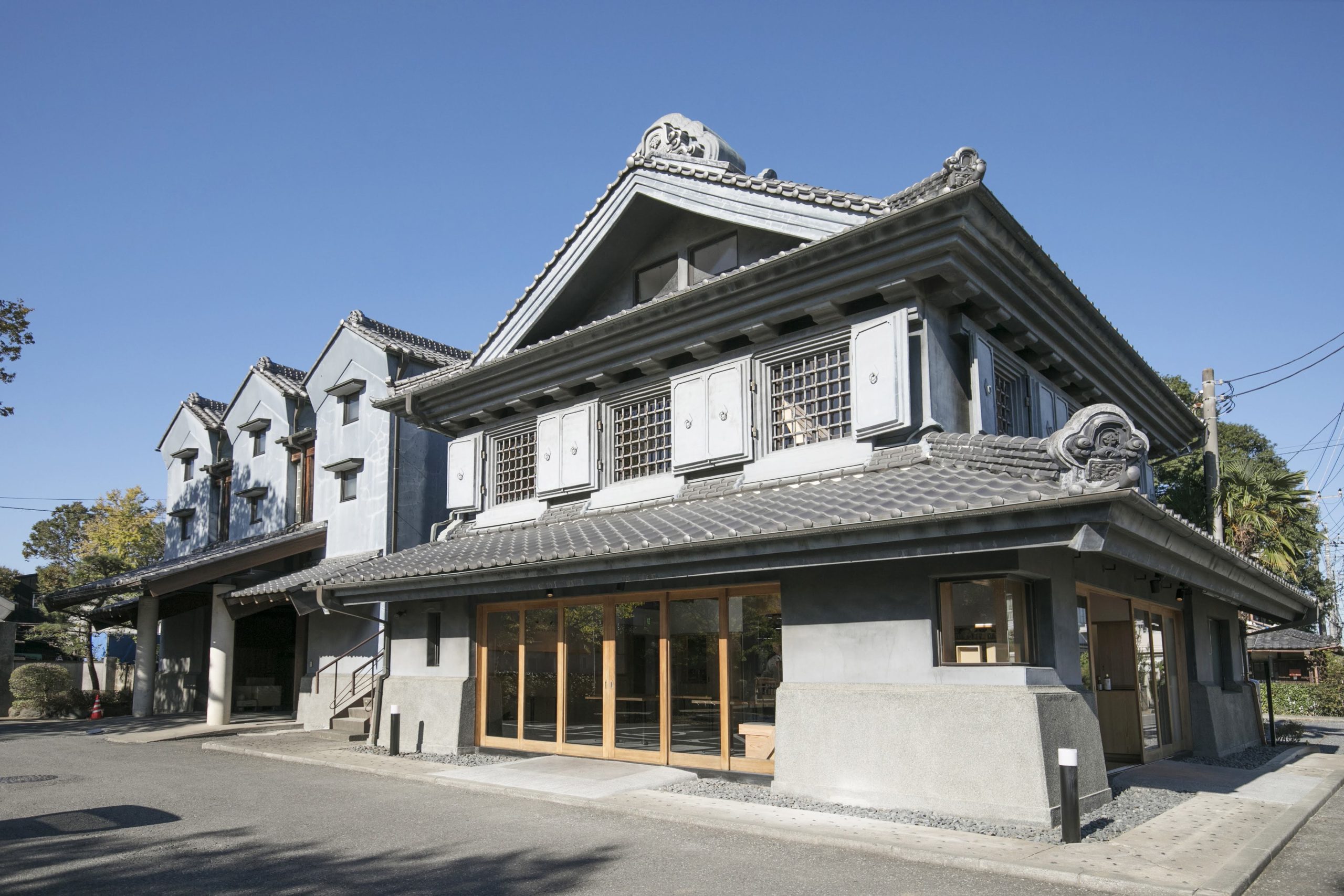
At “Kinbue Syoyu Park” (Soy Sauce Theme Park) in Kawashima-machi, Saitama Prefecture, visitors can enjoy "eating," "learning," "shopping" and "playing" at the "Kinbue Soy Sauce School," a soy sauce brewery factory tour, and the "Soy Sauce Brewery Restaurant." The museum is managed by Fueki Syōyu, a long-established soy sauce brewery founded in 1789. (For more information regarding the facility, please refer to the URL below)
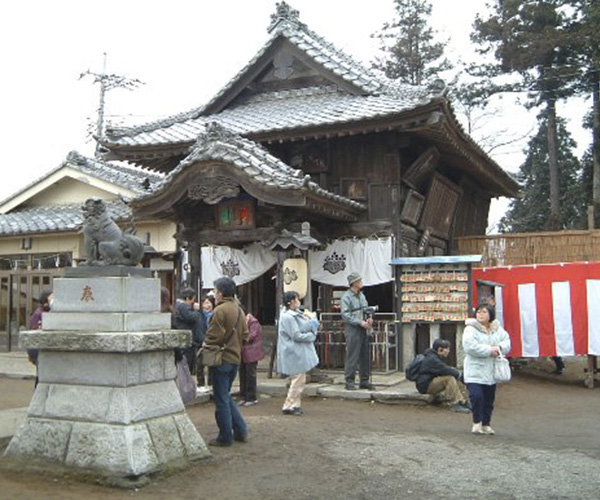
The shrine's beginnings trace back to when samurai warlord Hatakeyama Shigetada offered a statue of an ogre (oni) holding an iron rod as protection against ogres during the construction of Sugaya Yakata. One of the few shrines in Japan that worships "ogres" (oni), they celebrate Setsubun every year on February 3rd with an unusual chant: "Fuku wa uchi, Oni wa uchi, Akuma soto" (In with good fortune and the ogre, out with evil spirits). It is also known as the shrine of the God of Victory, and many soldiers came to pray for good fortune during the war.
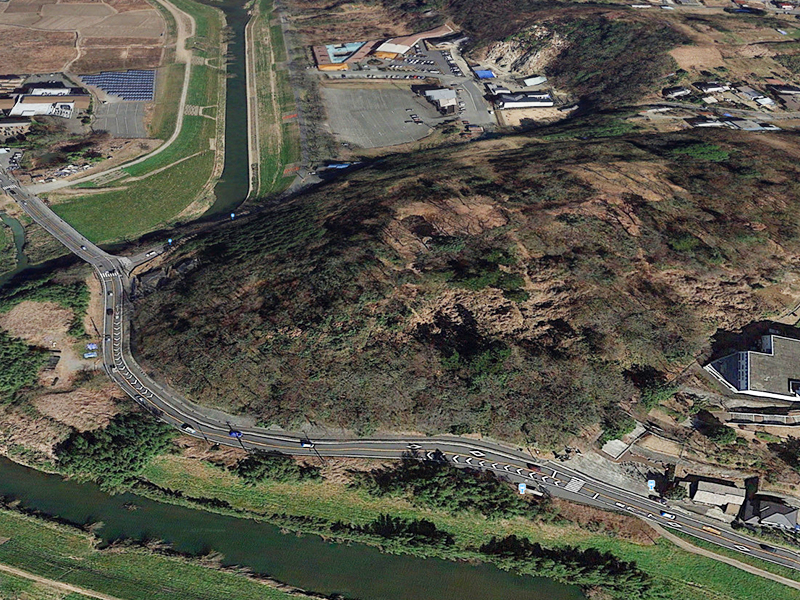
Matsuyama Castle Ruins, built at the top of the Hiki Hills, is one of the most prominent flat mountain castles in the Kitamusashi region and was designated a prefectural historic site in 1925. In 2008, it was added to the Hiki Castle Site Group, alongside the already designated Sugaya Yakata ruins (Ranzan Town), Sugiyama Castle ruins (Ranzan Town) and Ogura Castle ruins (Tokigawa Town, Ranzan Town, and Ogawa Town). The castle is surrounded by a low marshy area formed by the Ichino River, creating a natural fort.

Myoonzawa springs up from a steep wooded slope located along the Kurome river in the southern part of Niiza, Saitama. It is a clear stream selected by the Ministry of Environment as one of the "Top 100 Waters of the Heisei Era." Myoonzawa covers a stretch of about 100 m before joining with the Kurome river. You can find many rare creatures and plants that only can live in the cleanest of waters in this exceptional stream.
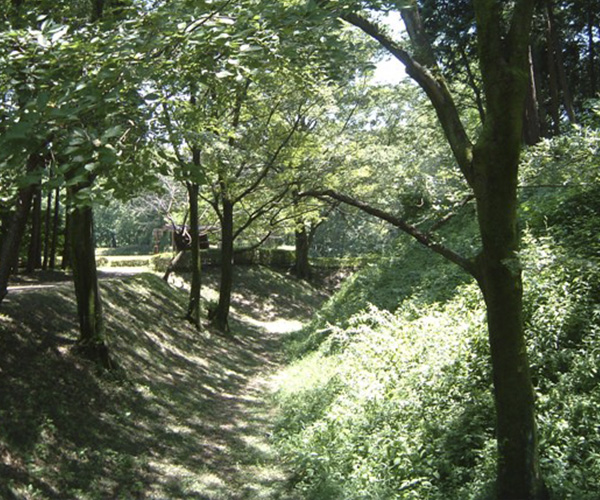
Overlooking the Toki River to the south is the historic castle ruins site "Sugaya Yakata" (designated a national historic site), said to be where samurai warlord Hatakeyama Shigetada built his mansion in the early Kamakura period (1185-1333), and inside of which exists a museum dedicated to the historic remains of Ranzan Town. The area is also known for its native Mountain Lily (yamayuri), in peak bloom in July. There are also plum and cherry trees. Ranzan Town is home to two of Japan's 100 most famous castles, and together with "Sugiyama Castle," "Sugaya Yakata" was selected for this honor on April 6th, 2017.
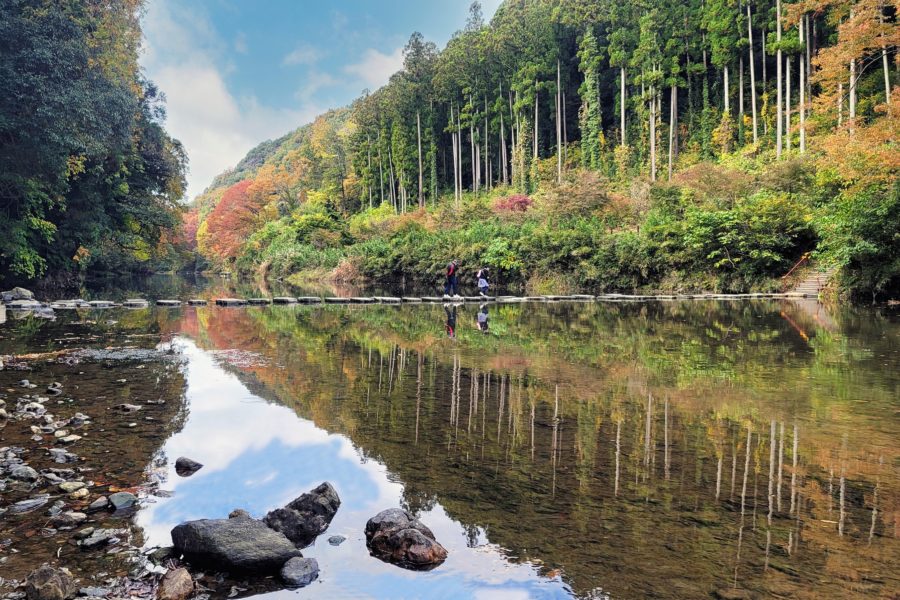
Ranzan Valley is one of Saitama Prefecture's famous scenic spots known for the Iwadatami rock terraces, the clear streams of the Tsukikawa River, and the heavily wooded natural environment. The Hosokawa area has a particularly unique peninsula-like topography, where a large river channel turns at a sharp 180 degree angle. The valley and surrounding Japanese red pine forests are a stunning sight! When Dr. Seiroku Honda, the first person in Japan to hold a Ph.D. of forestry, visited the area, he noted its great similarity to the landscape of Arashiyama in Kyoto, and referring to it as the "Arashiyama of Musashi Province," provided the origin of the name "Ranzan," another way to read "Arashiyama." In the summer, one can enjoy the fresh green and sounds of babbling brooks and chirping birds, in just an unbelievable one hour distance from the metropolis. In autumn you can also enjoy the reflection of the leaves on the surface of the water emphasized by the fiery red of the momiji maple trees. *Peak season for autumn leaves is mid-November to early December.
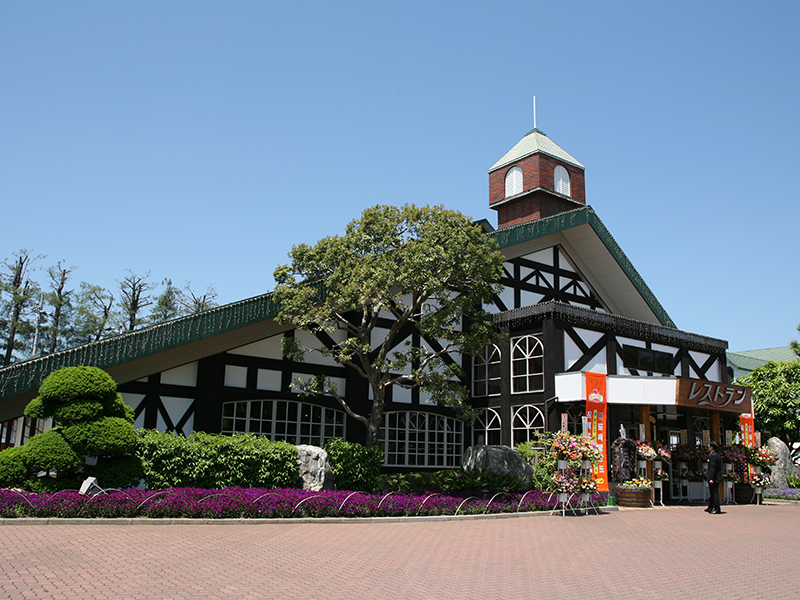
Established in 1946, our slogan is “from farm to dining table,” and we take pride in producing healthy and delicious ham and sausages using meat from the pigs raised on our farm. The quality of our product has been recognized for its authenticity in Germany, and has won many gold awards in international food contests. Featuring a theme park revolving around pork and health, there are gourmet pork meals, a farmers market selling local fresh vegetables and a relaxing hot spring, for a day full of leisurely fun.
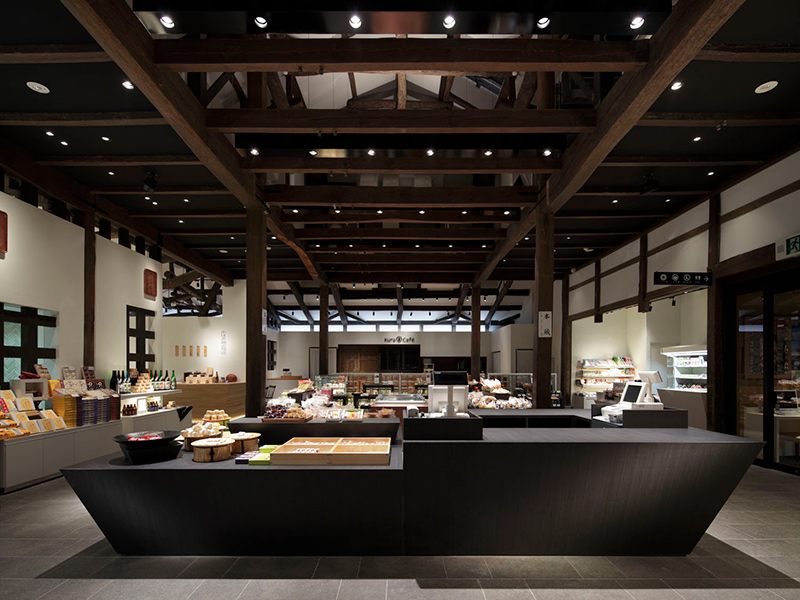
Koedo Kurari is an improved facility retaining the atmosphere of the original Kyūkagamiyama brewery, established in 1875. The brewery, built through the Meiji, Taisho, and Shōwa periods, was remodeled and designated as one of Japan's registered tangible cultural properties along with the three warehouses: souvenir shop (Meijigura), Restaurant (Taishōgura), Japanese sake shop (Shōwagura), and meeting space (Tenjigura).
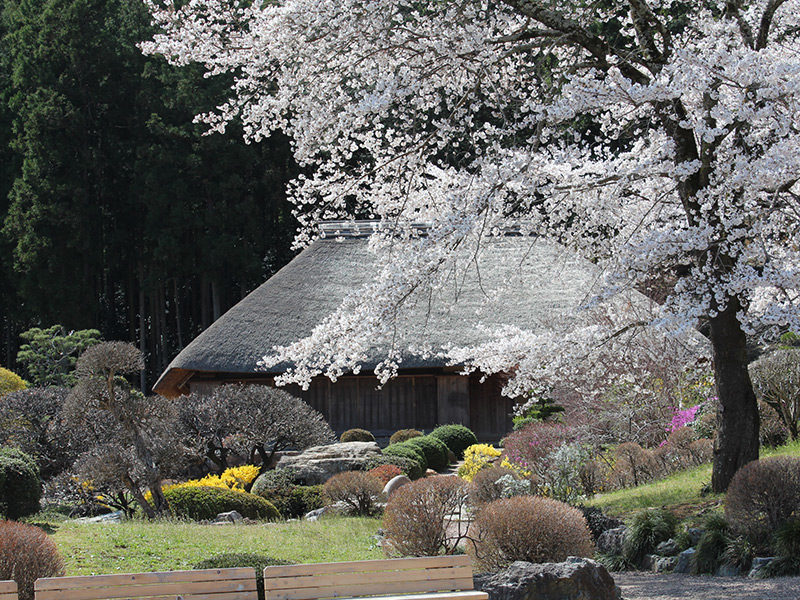
In addition to Japanese papermaking and seasonal experiences and workshops related to the Japanese paper, there's soba and udon handmaking experiences, and Japanese paper specialty goods and agricultural products available for purchase. The food court is chock-full of local village cuisine such as salted grilled artic char and oyaki. There's also a thatched-roof paper-making house inside the Japanese garden, where visitors can enjoy a relaxing space straight out of the Edo period.
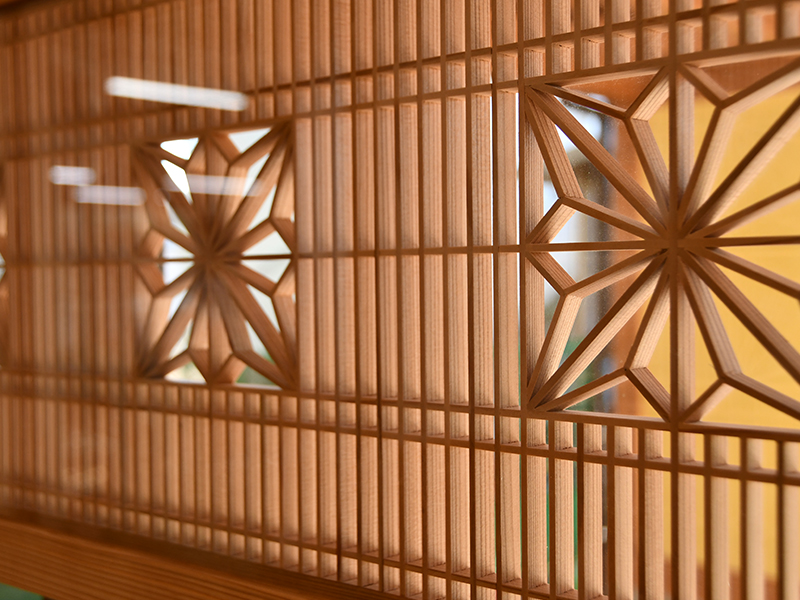
Doukan Omotenashi (hospitality) Plaza provides information on Ogose Town tourist attractions, historical sites, hiking trails, cherry blossom forecasts, and specialty products. Be sure to stop by when visiting Ogose Town!
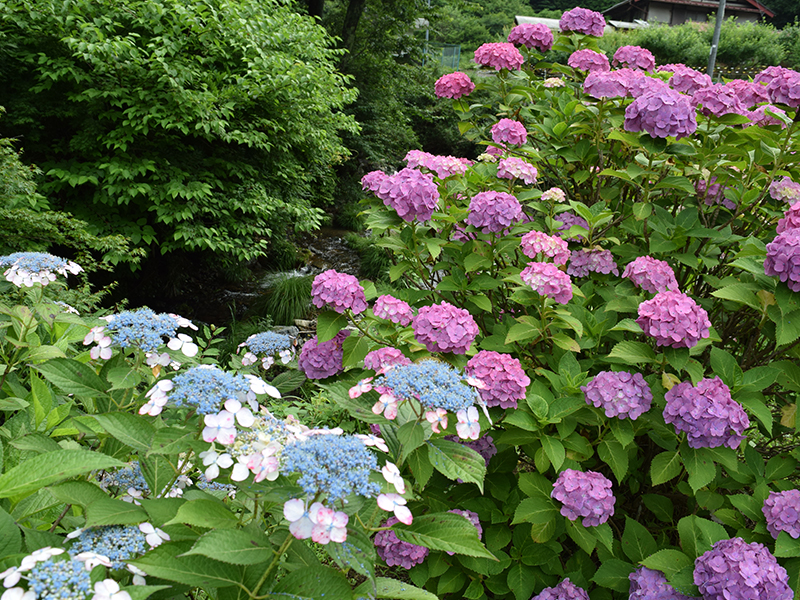
There are around 1,500 hydrangea plants in bloom along this 3-kilometer-long road, and you can enjoy the fresh air and chirping of birds while surrounded by nature.
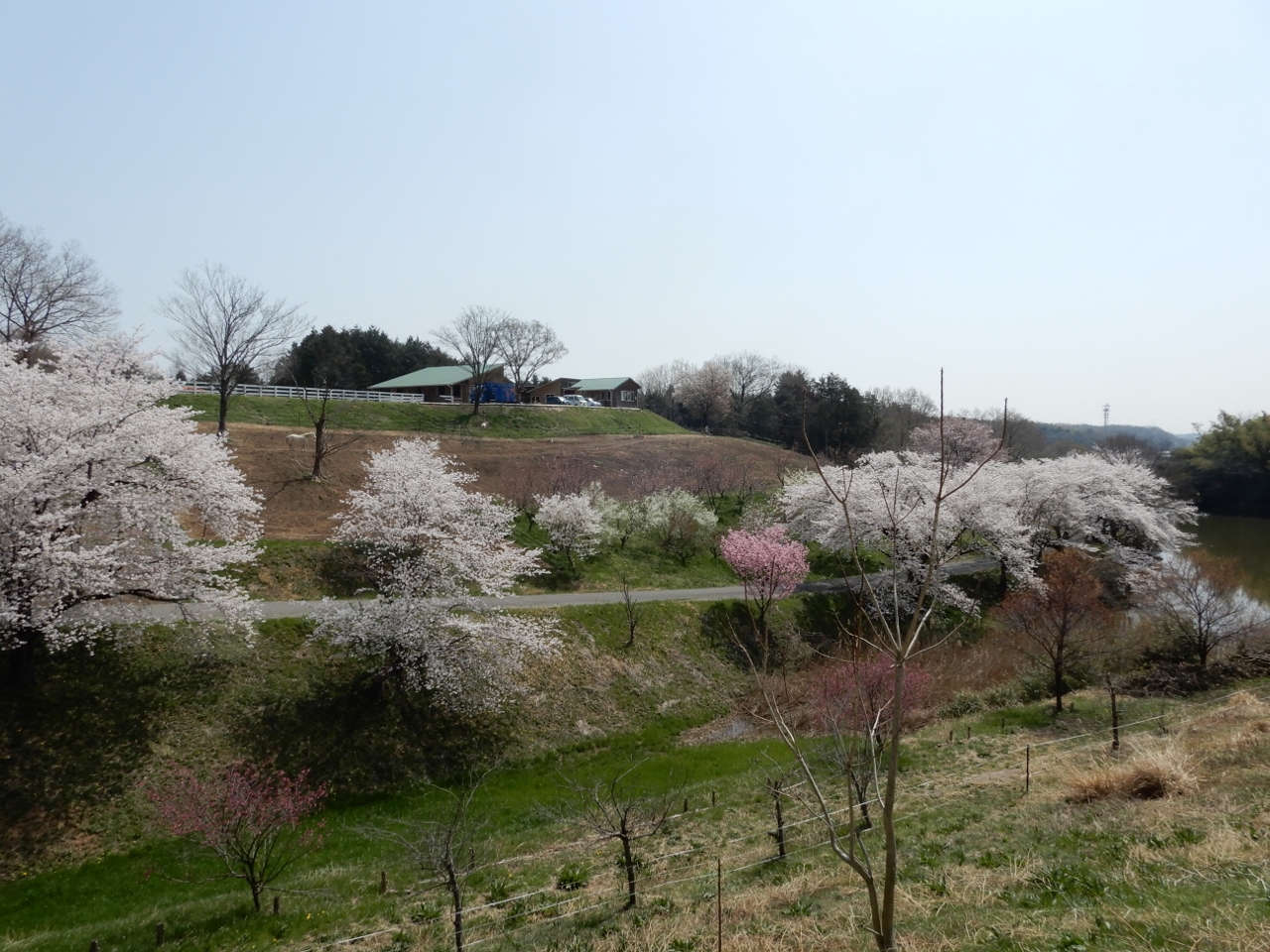
In the midst of the peaceful Satoyama, get in touch with nature and experience farming hands-on. There is a "Fureai Farm," which visitors can use freely for an annual fee, and the popular "Strawberry Farm," for picking strawberries and other fruits. There are also rice cultivation, digging of bamboo shoots, udon (wheat noodle) making, potato cultivation, Satoyama walk and hiking experiences, and various other events held throughout the year.
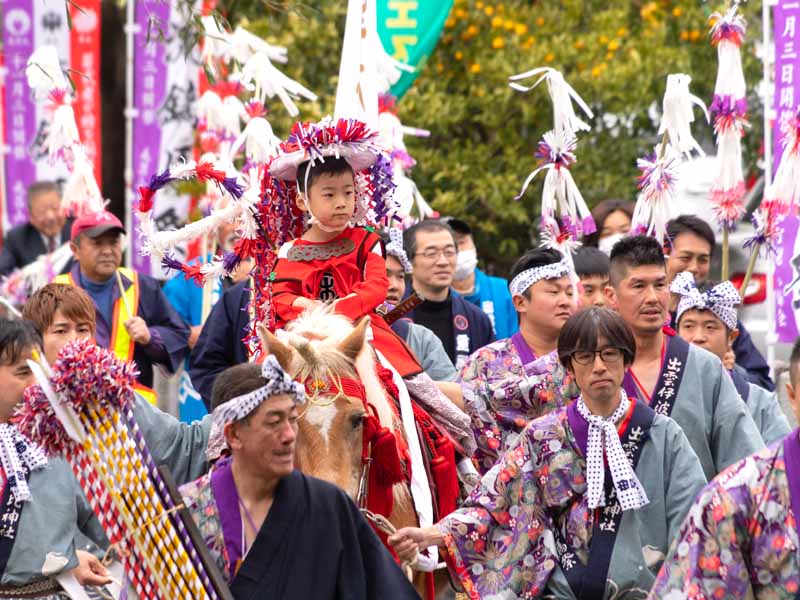
The stage for a powerful display of horseback archery, Izumo Iwai Shrine is the oldest shrine in the prefecture and, together with two building signs, designated as a national important cultural property. According to legend, the origin of the tradition dates back to 1063, when Minamoto no Yoshie visited the area to express gratitude after his successful conquest of Oshu, building the Hachiman Shrine dedicated to the god of horseback archery. Every spring and autumn, young people perform beautiful displays of archery while riding on the backs of galloping horses.
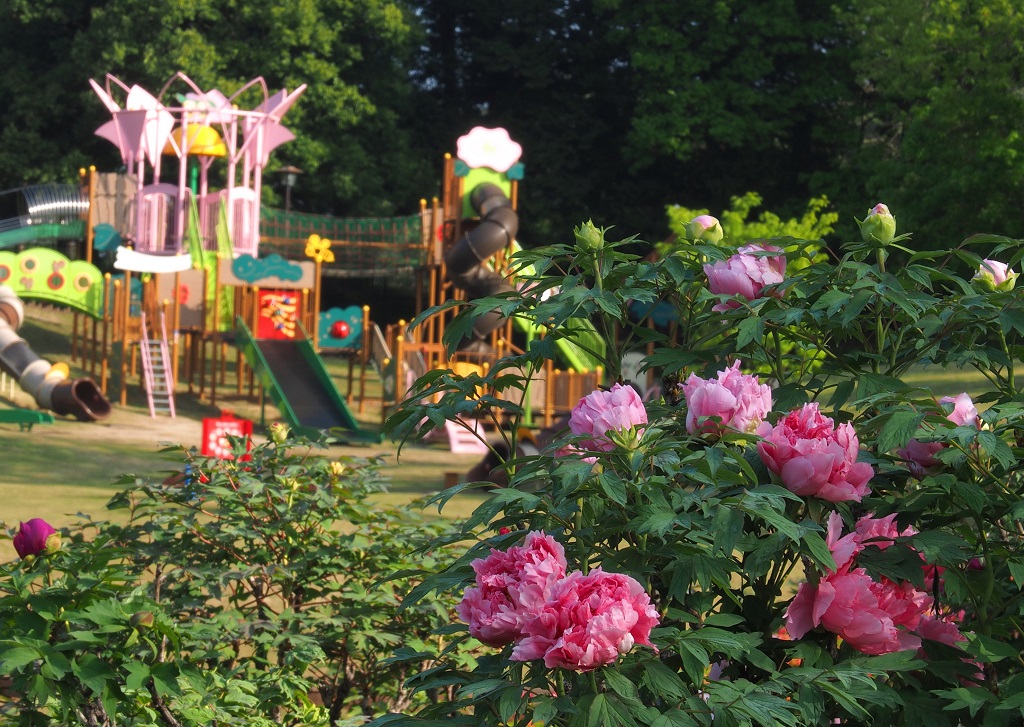
Opened in 1990 as part of efforts to promote the official city flower, the peony (botan). A prominent peony park in the Kanto region, roughly 30,000 square meters of colorful peonies bloom from mid-April to early May, culminating in the Peony Festival (botan matsuri) during peak bloom. Throughout the year, visitors can also view hydrangea, Japanese maple and wintersweet, and enjoy facilities such as a large playground complex, an open lawn, and an observatory.

You'll spend a delightful time with family and friends at Metsa Village, whether shopping for Nordic brand goods that give you a taste of Nordic lifestyle, perusing handicrafts at the market, enjoying a Nordic meal at the restaurant, taking part in arts and crafts workshops, renting a boat to cruise the lake, or through various seasonal events. There's plenty to experience at this lakeside forest.

The Sennen no Sono Lavender Field spans approximately 6.5 hectares and boasts around 22,000 lavender plants including over 10 different lavender varieties, such as Grosso (French), Hidcote (English), and Avonview (Spanish). In late May, visitors can enjoy the enchanting sight of red, pink, and white poppies blooming alongside early-blooming lavender. By mid-June, a portion of the field transforms into a golden sea of wheat known as "Nourin 61," and towards the end of June, visitors can witness the spectacle of wheat harvesting. The annual Ranzan Lavender Festival takes place from early to late June, offering a wonderful opportunity to experience the beauty of the lavender field. *Please note that access to the fields is restricted after the festival as they undergo harvesting.

This shrine is dedicated to the spirit of Mt. Ontake, the sacred mountain of the Kiso district of Shinano Province. It is said to have a great spiritual power effective in dispelling bad spirits and bringing good fortune to all who visit. The shrine garden covers an area of almost 1,000 square meters, and includes Togo Park, a park associated with General Togo Heihachiro, within its precincts. The shrine performs various kinds of purification ceremonies (oharai) such as groundbreaking ceremonies, house purification, car purification, and purifications for Shichigosan (ceremony celebrating children at the age of 3, 5, and 7) and for the first shrine visit of the year.
This site uses cookies to improve the user experience. If you continue to browse, you consent to the use of cookies on this site. Accept
CONTACT
